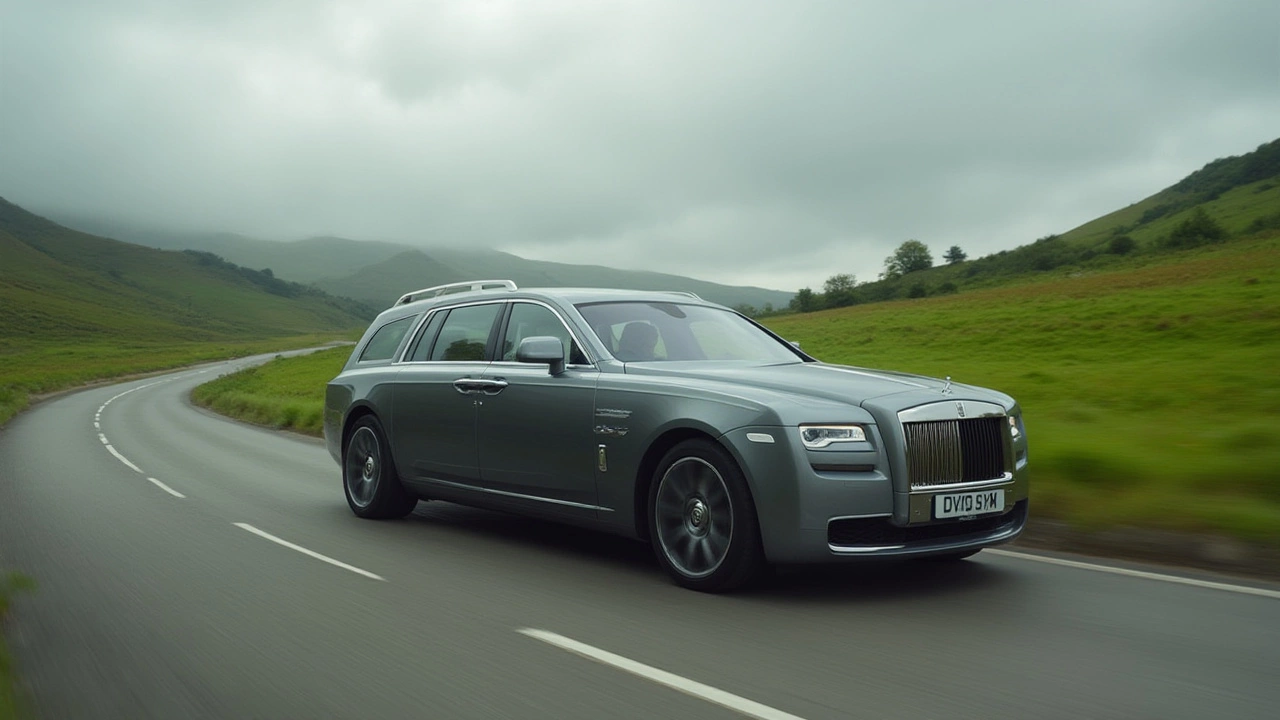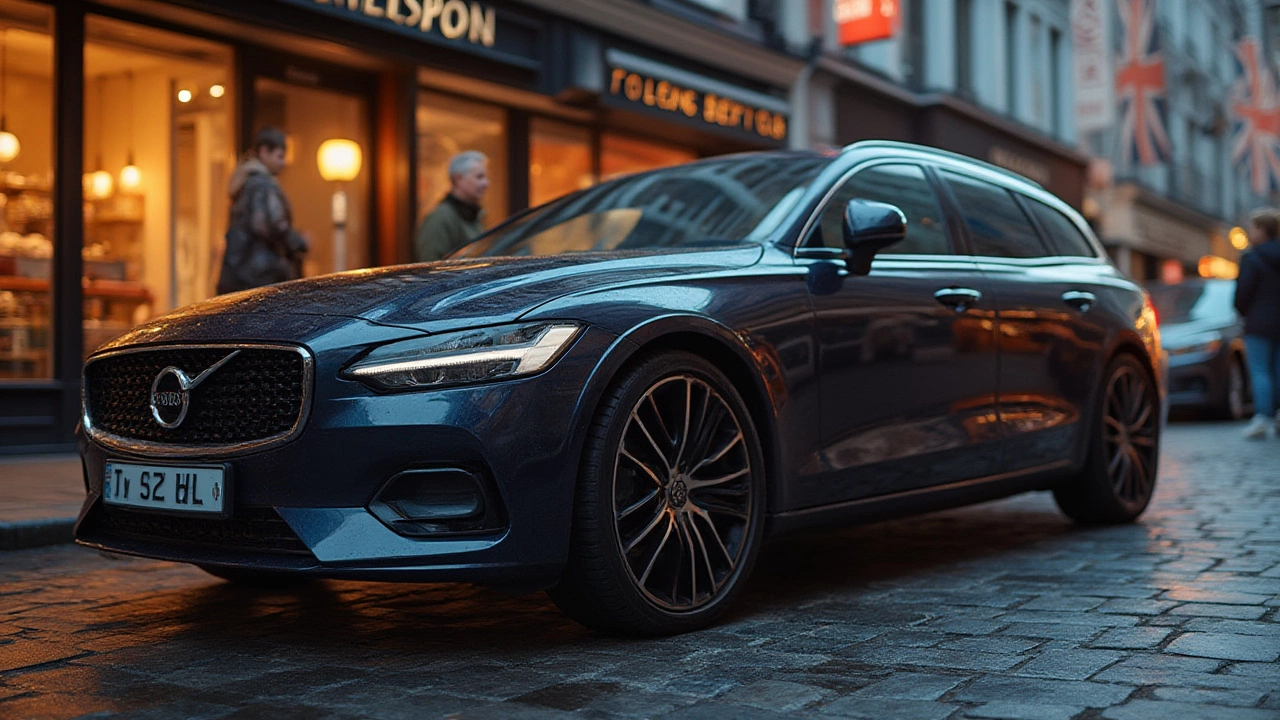Ever stared at a car in a parking lot and instantly thought, wow, now that's a set of wheels? There’s just something magnetic about shiny alloy wheels that steel wheels can't quite replicate. But are these eye-catching upgrades worth your cash, or are they just hype? The reality is, not every upgrade delivers the benefits you think. Alloy wheels are often marketed as a must-have for style and performance, but before you pull out your wallet, it pays to dig into what they really offer and whether they fit your needs—or if you're better off sticking with what you have.
What Makes Alloy Wheels Different?
Here’s the deal: most cars roll off the factory with basic steel wheels covered by plastic hubcaps. Steels are built for one thing—toughness at a low price. Drop one on your foot, you'll know. Alloy wheels, on the other hand, are usually made from a mix of aluminum and sometimes magnesium. This means they're a lot lighter, and that single detail actually unpacks a load of differences. It’s not just about shaving pounds off your car for bragging rights. Less weight in the wheels means your suspension works more easily, you get quicker acceleration, and you might even notice sharper steering. Alloy wheels often come with more stylish and sporty designs too, which explains why car photoshoots rarely show steelies in the spotlight.
There’s a real technical punch here: every kilogram you lose on unsprung weight (like your wheels and brakes) counts double for performance—especially handling. So, swapping out steel wheels for alloys can reduce strain on your suspension and give you more feedback from the road. This is why a lot of hot hatchbacks, sports sedans, and premium models come with alloys straight from the dealership.
Let’s talk about heat, because not enough people consider it. Alloys conduct heat better than steel. That means they cool the brakes down faster, which makes a difference if you do a lot of motorway speeds, hilly drives, or spirited weekend blasts. Anyone who’s faced brake fade on holiday knows how much this can matter.
Here’s a quick comparison in table form—actual weight and cooling data from recent model reviews:
| Wheel Type | Typical Weight (16”) | Heat Dissipation (After 10 min, 60-0 mph stops) |
|---|---|---|
| Steel | ~10.5 kg | Retains 15C more heat |
| Alloy | ~7.7 kg | Dissipates heat 20% faster |
The numbers don’t lie—lighter, cooler wheels really can make a difference. That said, it’s the combo of looks and performance most drivers really notice first.
Benefits and Drawbacks of Upgrading to Alloy Wheels
You’ll hear plenty from alloy fans (and there are a lot out there) about the sheer fun these wheels bring to the table. Let’s break down where alloys shine—and where they might leave you wishing you’d waited.
The obvious first win is pure curb appeal. Alloys look modern. They can make even an older family hatchback look expensive. A 2018 survey in the UK found that nearly 70% of buyers said nice wheels were in their top three priorities for choosing a new car. That’s huge—and it means that, if you want to boost resale value or just enjoy glancing back at your ride in the driveway, alloys deliver.
Performance isn’t just a marketing pitch, either. Those lighter wheels mean less rotational mass. The result? Faster acceleration off the line and more responsive steering. Anyone who’s swapped steel for alloys knows the difference when you take a corner fast or brake hard. It’s not night and day, but it’s noticeable, especially on smaller or sportier cars.
Fuel efficiency is another bonus, though it varies. Drop several kilos per wheel, and the engine doesn’t have to work as hard. Real-world savings aren’t dramatic, but every bit counts with fuel prices always creeping up. On longer drives, owners have reported up to a 2% bump in mileage after switching to alloys. Not life-changing, but definitely not nothing either.
But, here’s where the shine fades a bit. Alloy wheels tend to be noticeably more expensive than steels—not just to buy, but to repair. Hit a hefty pothole, and cracking an alloy isn’t just bad luck; it’s a known risk. Where steels might bend and bang back into shape, alloys can crack and need replacing altogether. That’s a hefty bill just for one mistake. Plus, some insurance companies even bump your premiums if you swap to aftermarket alloys, classing it as a modification.
Security is another surprise drawback. Alloy wheels attract thieves. If you’re swapping from basic steel wheels, think about getting locking nuts. It won’t stop a determined pro, but it’s a bit of hassle that makes your ride less of a target.
So, the real question is: what matters more to you—looks, or practicality? If you’re the type who parallel parks by feel, those pretty alloys might end up scraped or cracked and cost more in repairs. If you drive more rural roads or rough city streets, sometimes tough steel makes sense. For others, nothing beats the pride of your car gleaming, alloys and all.

When is Upgrading to Alloy Wheels Worth It?
It’s not always a simple yes or no. Start by thinking about your car. Daily commuter? Weekend road tripper? Proud owner of a hot hatch or sporty sedan? Folks who love a twisty road, or who regularly drive on motorways, actually get meaningful benefits. That cooler braking can make a difference on long downhill stretches or busy commutes with lots of braking and accelerating. If you tow a trailer or caravan, better handling—and slightly improved braking due to less unsprung mass—can improve safety as well.
Live where the roads are more pothole than pavement? Alloy wheels can be a pain if you hit something hard. They’re stronger against bending but far more likely to crack. In cold-weather places, salt and grit eat alloys for breakfast—corrosion is a known issue. Still, modern alloys with decent powder coating fend off the worst, but they need love: regular cleaning, occasional polishing, and strict avoidance of curb rash. If you like things easy and cheap, steel might be the winner.
Then there’s value for money. OEM (original equipment manufacturer) alloys can push your new-car price up by £500–£800 (or more, depending on size and design). Aftermarket options run the gamut, from bargain brands to eye-wateringly high-end. Sometimes, the money you’d spend giving your old car an alloy facelift might be better spent saving for your next ride altogether.
Ever checked your car insurance small print? Some insurers don’t bat an eyelid at swapping to alloys, especially if they’re official parts for your model. Others see it as a "modification" and adjust your rate upwards. Always mention upgrades to your insurer—nasty surprises are out there if you have a claim and the car isn’t as originally sold.
To sum up the worth, here’s my quick tip-list for deciding:
- If you live in the city or suburbs, enjoy driving, and want your car to stand out—go for it, but set aside money for the odd repair.
- If your driving is mostly country roads, bad surfaces, or you park where theft is a risk, have a hard think—steels might save you in the long run.
- If you just want style, shop for less extreme, robust designs, and always get locking wheel nuts.
- If you care about insurance or resale, talk to your insurer and get confirmation that you're covered before you splash out.
Tips and Facts When Choosing Alloy Wheels
If you’ve decided to take the plunge, there are pitfalls to sidestep and tricks that can save your wallet and sanity. First off, size matters—bigger wheels look premium, but fitting massive alloys to a car built for smaller wheels messes with handling and ride comfort. Go one or two inches up from stock, max, unless you’re reworking suspension and brakes too. Every inch bigger usually means a heavier wheel and thinner tire, which actually increases the risk of ride harshness and pothole damage.
Check your bolt pattern and centre bore—get these wrong and your new alloys simply won’t fit. A reputable wheel shop or your car’s handbook will have the right info. Offset is important, too; the wrong offset makes steering weird or causes tires to rub the inside of your arches with every turn. No fun when pulling out of a parking spot.
Don't forget quality. The cheapest alloys aren’t always safe or durable. Look for wheels tested to JWL, VIA, or TUV standards. These markings mean the wheel’s been put through stress tests and won’t let you down. If it just says "for show purposes only"—walk away.
Balance matters after installation. Poorly balanced alloys can make your steering wheel wobble and wear out your tires faster than a teenager learning to drift. Always get your new wheels balanced and fitted by a pro who knows what they’re doing. It’s not a DIY job unless you’re really confident.
Finally, keeping alloys looking smart isn’t too hard if you keep on top of it. Road salt, brake dust, and grime can pit and stain the finish. Grab a set of soft wheel brushes, avoid acid-based cleaners, and invest in some wheel wax. Plenty of car mates miss this and then end up with wheels that look worse in a year than cheap hubcaps.
One last stat for the road: the global alloy wheel market is projected to hit $25 billion by 2030, up from around $17 billion in 2023. That’s not just car nerds—it’s a sign that more everyday drivers are seeing real-world reasons to swap. Alloy wheels aren’t just flash—they offer real benefits if you drive in the right ways, care about resale, and want a dose of pride in your ride. But like any upgrade, they work best when you know what you’re really getting—and you keep your expectations realistic.

